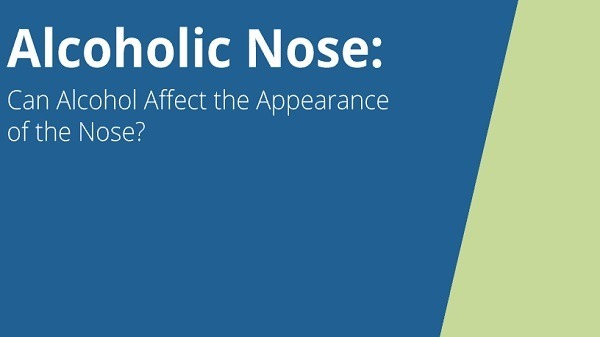“Alcohol nose” describes the redness and bulbous shape of the nose that is highlighted while drinking alcohol. It is a misunderstanding of rosacea and can also be the result of enzyme deficiency. Unfortunately, this misunderstanding causes a lot of stigma and shame for individuals with these underlying factors and may cause them to avoid social events where drinking occurs.
A person’s genetic makeup can influence the degree of flushed skin visible while drinking. Lighter complexions and lacking certain enzymes can increase the flushed color of the nose and cheeks while drinking. Those of Celtic heritage and Asian descent typically experience increased redness while consuming alcohol.
Although underlying factors influencing skin changes have no direct ties to drinking, certain predispositions wrongfully deem individuals with the label “drinkers nose.” The label is based on the idea that nose redness and shape changes are due to excessive drinking: this is false. For more information on “drinkers nose” and what it means, continue reading.
What is a drinker’s nose, and how does it relate to alcohol?
While a drinker’s nose is not the outcome of excessive drinking, it is attributed to overdrinking. A red, bulbous nose, deemed an “alcoholic nose,” is the belief that alcoholism is the cause of the drinker’s nose. It is actually the result of a medical condition called Rhinophyma. No evidence proves that alcohol nose and alcohol consumption are connected; therefore, the drinkers nose label is based on a misunderstanding.
How does drinking trigger skin redness?
The actual “cause” of drinkers’ noses is Rhinophyma, a skin condition branched under rosacea. Rhinophyma is the most significant of the four types of rosacea that occur. Rosacea causes the skin to become inflamed and red.
Over time, rosacea worsens, especially if it is not treated. When blood vessels are broken under the skin near the nose, a swollen, red appearance takes shape. If the redness is neglected, it may spread to the cheek area, and the nose may become even more bulky and bumpy over time.
What increases the chances of developing the condition?
Drinking in excess may aggravate rosacea, but there is no actual relationship between drinking and the condition. Genetics, ancestral background, and one’s complexion play the leading roles in developing a red skin complexion while drinking. Likewise, if you have a fair complexion, are between 50-70 years old, are male, and have a history of rosacea, you may be more likely to develop a drinker’s nose.
Here are some signs that indicate you could have drinkers nose:
- a gradual change in the shape and coloring of the nose
- thickening of the skin on and around the nose
- red and purple tinted cheeks
- visible oil glands
- a swollen, bulbous shape of the nose emerges
Don’t let a label define you. Start your recovery.
Although alcohol is not a cause of a drinker’s nose, it is another reason to get the care needed if you or someone you care for is struggling with alcohol addiction. Reach out to a treatment center to start your recovery.


